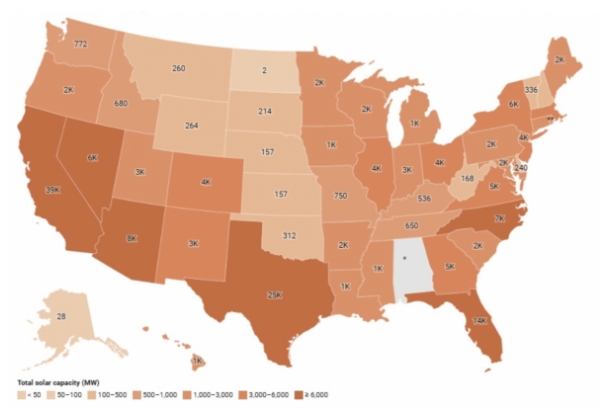
The report highlights states with significant distributed solar growth. California added 1.5 GW, and New York contributed 0.94 GW. States like Maine (44%), Arkansas (37%), Oregon (35%), Montana (35%), and South Dakota (32%) saw capacity increases exceeding 30% compared to 2023. In New Hampshire and Arkansas, all solar growth was distributed, while Massachusetts and Montana saw over 90% of their growth in this category.
Despite a 25-31% decline in the residential solar market, as reported by Ohm Analytics, 23 states and the District of Columbia now have approximately one in 25 households with rooftop solar, up from 21 states in 2023. Community solar, which enables access for those unable to install solar due to financial or structural barriers, is supported by policies in 19 states, promoting local decision-making and adoption.
ILSR’s 2024 Community Power Scorecard outlines ideal community solar policies, emphasizing no capacity caps, fair compensation, simplified billing, and support for low- and moderate-income subscribers. Using its Community Solar Tracker, ILSR identified nine states—Colorado, Hawai’i, Illinois, Maryland, Massachusetts, Minnesota, New Jersey, New York, and Oregon—with notable community solar saturation.
Minnesota leads with over 150 watts of distributed solar per person, equivalent to more than three in 50 households having rooftop solar, with 47% of its solar capacity from community solar. New York (39%) and Massachusetts (20%) also have significant community solar shares. Oregon doubled its community solar capacity, while Illinois saw over 50% growth.
John Farrell, director of ILSR’s Energy Democracy Initiative, and Timothy Denherder-Thomas, general manager of Cooperative Energy Futures, addressed challenges in a Just Solar Coalition presentation: “The clean energy transition requires both utility-scale and distributed generation and encouraged maximizing local solar to maximize local benefits.” They noted utility opposition to distributed solar due to guaranteed returns on their own infrastructure investments.
The top five states for total solar capacity in 2024 were California (39.4 GW), Texas (25.4 GW), Florida (13.8 GW), North Carolina (7.3 GW), and Arizona (1.8 GW). For distributed solar saturation, Hawai’i, Maine, Massachusetts, California, and Arizona led, based on installed capacity per person. Massachusetts, California, Arizona, Nevada, and New York ranked in the top ten for both metrics.
ILSR’s analysis combined its community solar data with U.S. Energy Information Administration figures on small-scale solar, using state population estimates to calculate per capita distributed solar. This report underscores the growing role of distributed solar in the U.S. energy landscape, supporting local economies and sustainable energy access.